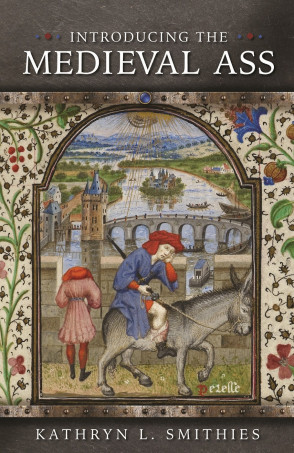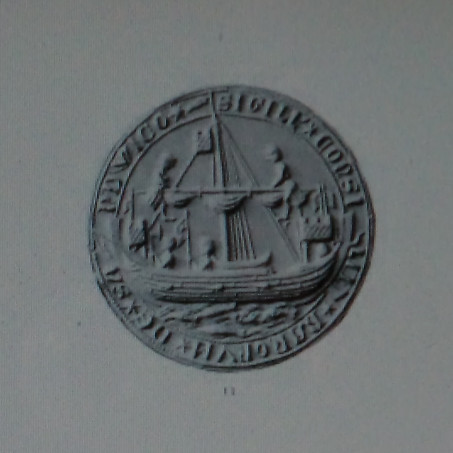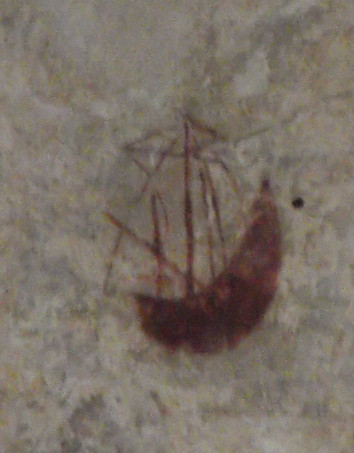As a follow up to last week, I thought I would just mention that my hard copy of The Routledge Companion to Marine and Maritime Worlds 1400–1800, edited by Claire Jowitt, Craig Lambert and Steve Mentz, has now arrived. There look to be lots of fascinating chapters from ‘Global Networks’ to ‘Piracy and Privateering’, ‘Sea Music’, ‘Ottoman Seafarers’ Tales’ and ‘Nautical Manuals’. If anyone is interested, please see further details at: https://www.routledge.com/The-Routledge-Companion-to-Marine-and-Maritime-Worlds-1400-1800-1st-Edition/Jowitt-Lambert-Mentz/p/book/9780367471842 and in due course it is hoped there will be a paperback edition.

However, before that here are the three books involving the Centre team in 2020: to go with Marine Worlds there is Dr Claire Bartram’s edited essay collection on Kentish Book Culture and Dr Diane Heath, as series editor, is bringing to publication Introducing the Medieval Ass, which received lots of attention at the virtual sessions at the International Medieval Congress, Leeds. Since then, Diane has received several offers from scholars who would like to write about other animals, which means that as well as swans and snails that are in progress, there may in future be horses, eels, pigs and oysters to name but a few of the University of Wales Press’s growing menagerie.

Moreover, article number three has now arrived in that my essay on the Cinque Ports’ civic charitable institutions – hospitals, is now out in Archaeologia Cantiana, the annual journal of Kent Archaeological Society. This article gave me an opportunity to assess again, almost 20 years after my English medieval hospitals book, Bishop Hamo’s hospital foundation(s) in his native town of Hythe, and more especially the important role of the civic authorities in his various charitable initiatives. As at Sandwich and New Romney, this civic involvement illustrates just how innovative and some might say forward thinking these ports were, in some cases as early as the 13th century. For that I remain very grateful to Mr Tim Lawrence, clerk, and the Trustees of the Hythe hospitals of St Bartholomew and St John for several years ago granting access to their medieval archives, especially the charters and the unpublished catalogue of the hospitals’ muniments which are held at the Kent History and Library Centre, Maidstone.
In addition, I thought I would mention that I am joining august company in that also published in Archaeologia Cantiana this year is an important article on Dover Castle in 12th-century Kent. Richard Eales, an expert on castles, has explored the role of the castle in relation to royal power, specifically that of Henry II, in its local and regional context. Consequently, as well as looking at military issues relating to Henry’s massive expenditure on the castle, Richard carefully considers other national and international matters which are likely to have influenced the king, as well as the conduct of royal policy in Kent, a strategy that had its roots in the ideas and actions of his Norman ancestors.

Staying with this maritime theme, Diane Heath (I feel jokingly but … ) mentioned the possibility of further oyster references from Kent. Leaving aside the famous oyster companies at Faversham and Whitstable, I have here a few notices from a variety of medieval sources. For example, Keith Parfitt’s (Canterbury Archaeological Trust) archaeological excavation at Townwall Street Dover found oysters to be the most common shellfish consumed locally. This is probably not surprising because the documentary sources for medieval Dover include, for example, oysters being sold by Henry Holond and two other men in 1425, such shellfish traded in the town’s fish market.
Going north to Canterbury, oysters again make an appearance. Although whether John Wesynden, of St Mary Northgate, expected his executors would purchase 8s worth of wine and oysters from Canterbury’s fish market in St Margaret’s parish, known as the Whitstable Market, is unknown. The presumably grateful recipients were to be monks from Christ Church Priory, who in response to this largesse were to celebrate masses for Thomas’s soul.
Even if the oysters the monks enjoyed didn’t come from Whitstable, they presumably came from somewhere along the north Kent coast because in addition to Faversham and Whitstable, fishermen from the Isle of Sheppey to mainland communities at Milton, Halstow and Upchurch owned oyster dredges and boats, such as Michael Man of Milton whose dredging cocke (boat) and its gear was worth £4 6s 8d according to the valuers when he died in 1582. Occasionally, too, rents were paid in oysters, including 300 oysters for a 2-acre plot at the archbishop’s manor of Teynham in the late 13th century. And even though in this case the cash alternative was 6d, it does suggest both their abundance and their popularity as a food source.

Keeping with the sea and voyages, but expanding to include overland travellers too, I thought I would just mention a few thoughts on mobility in the Middle Ages at a time when lots of people are thinking about travelling, whether they opt for a staycation or decide on a foreign holiday. For it is worth remembering that medieval people travelled far more than is popularly thought, and the idea that people rarely if ever left their farm/village/town, and then only to go to the local market needs drastic rethinking. Put simply, people were mobile, but the reason they did so related primarily to work, with trade being the lifeblood of medieval society. Thus people (and goods) travelled the roads, highways, tracks, rivers and sea lanes on their own business, that of their employer, lord, king or institution (town, monastery etc). Ok, yes, there were other reasons – for the aristocracy, the lifestyle of moving from one family estate to another remained important, whether for business and/or pleasure; while seeking work, going to war, escaping justice or following conviction (for example, banishment from a town), or going on pilgrimage also led to the movement of people. Yet the latter was probably very minor overall, even allowing for international cult sites and special anniversaries. Consequently, the needs of commerce were paramount, from the state of the roads to the provision of inns, horses, ships etc.
Now to a degree this world of commerce can be tracked in the documents – deeds, legal agreements, taxation, court cases, accounts, but maybe these records don’t catch the imagination like pilgrim miracle narratives, notices about gifts to specific shrines and literature like The Canterbury Tales, which is partly why ‘ancient routes’ have at times today become synonymous with medieval pilgrimage. And adding in the idea of holidays and vacation, it is probably informative that it is Chaucer who mentioned ‘vacacion’ in the Prologue of the Wife of Bath’s Tale, but for him he was thinking of the notion of spare time, leisure time to read in this case, not the 19th-century idea of vacation as a ‘period spent away from home or business’ – a holiday. Thus, it is perhaps not surprising that medieval society welcomed holy days as a respite from work, for the concept of paid leave and annual holidays would not come for many centuries, and no work could easily mean no food. This meant medieval pilgrimage was costly regardless of whether it was a pious undertaking or a ‘holiday’, and most, therefore, looked to other means to express their piety and to enjoy their leisure. However, I think it is interesting to see what lengths people were prepared to go to regarding pilgrimage, as these three Kent examples illustrate.

Firstly, Alice Norman, in 1473, intended that after her death her feoffees would sell her tenement. From the proceeds they were to give Thomas Howlet, her brother, 53s 4d on condition that he went to Rome either for the next feast day of the Purification or Easter to have mass celebrated for her soul and the soul of her first husband in the Scala Celi chapel. Another will-maker who similarly placed the onus on a near relative to fulfil her wishes was Agnes Downe from Hythe. According to Agnes’ will, it was William Down who had promised to go to St James de Compostela for Robert his father and her late husband, and in recompense she left William the sum of 40s. Staying with Hythe and pilgrimage to this international shrine in Spain, Alexander Tanner, in 1496, wanted his executors to find a man and pay him sufficiently to go there to make an offering of 20s for Alexander’s soul.
To finish, as an advance notice the Kent History Postgraduates group will be meeting again next week and the Centre and CCCU will be bidding farewell to Professor Jackie Eales who is retiring.
 Centre for Kent History and Heritage
Centre for Kent History and Heritage Sheila Sweetinburgh
Sheila Sweetinburgh 890
890

